Abstract
A new series of LH-RH analogues containing an Azgly10 modification and having potent agonist properties were given in high concentration to intact female rats. Plasma LH and FSH were raised to extremely high levels after 14 days' administration of the compounds (5.0 and 0.5 microgram/rat twice daily), but plasma oestradiol concentrations were reduced to those in ovariectomized rats. The weights of the ovary and uterus were also markedly reduced, suggesting that these compounds are, on this treatment regime, producing the effects of chemical castration.
Full text
PDF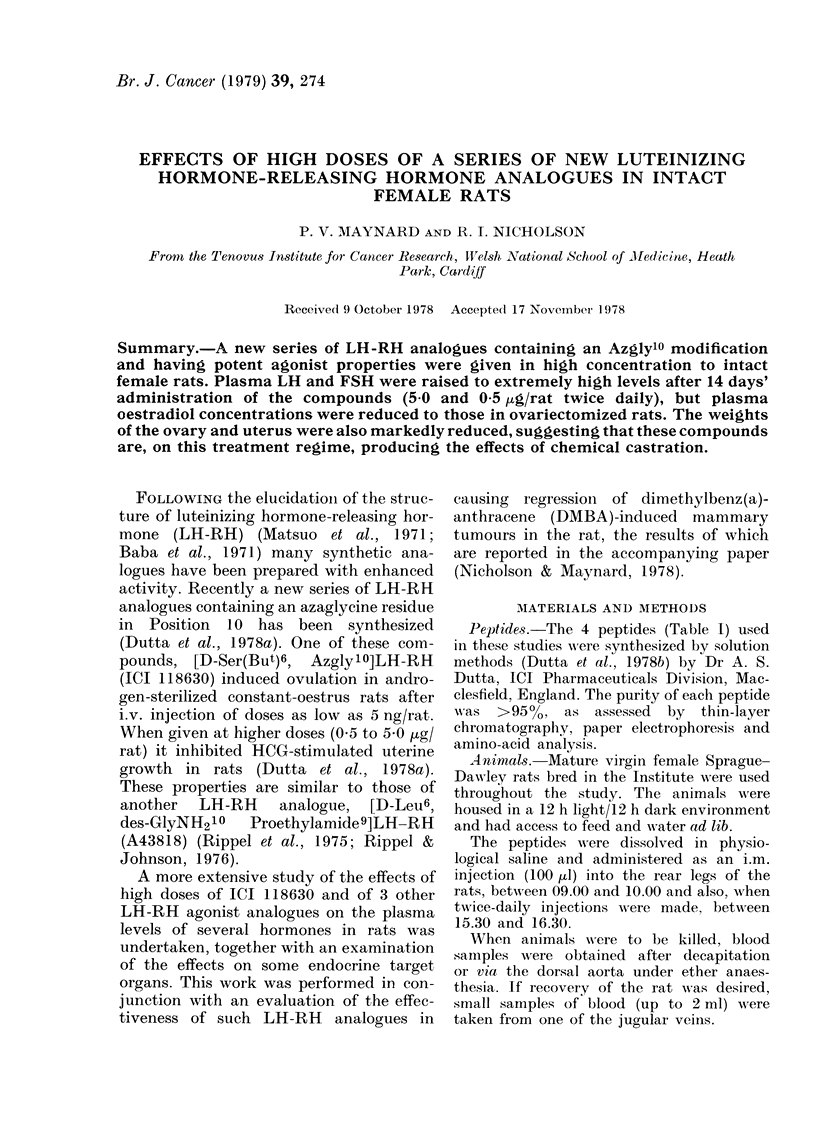
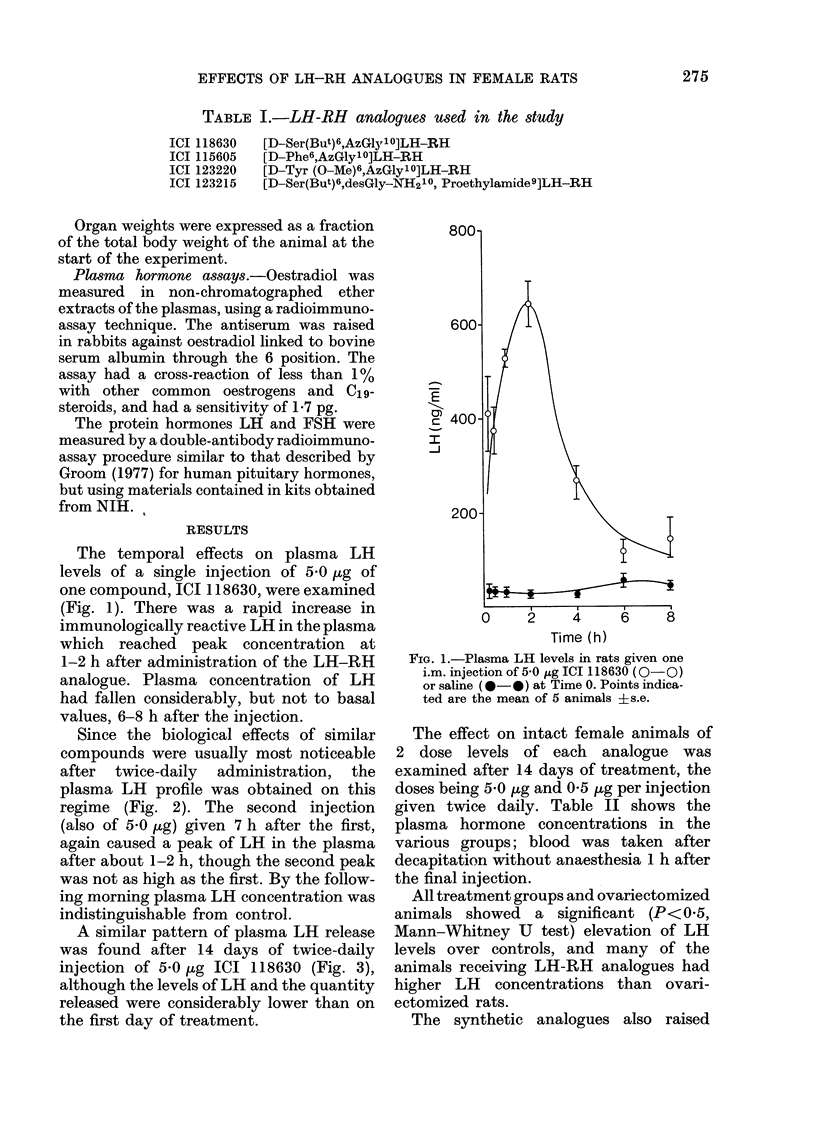
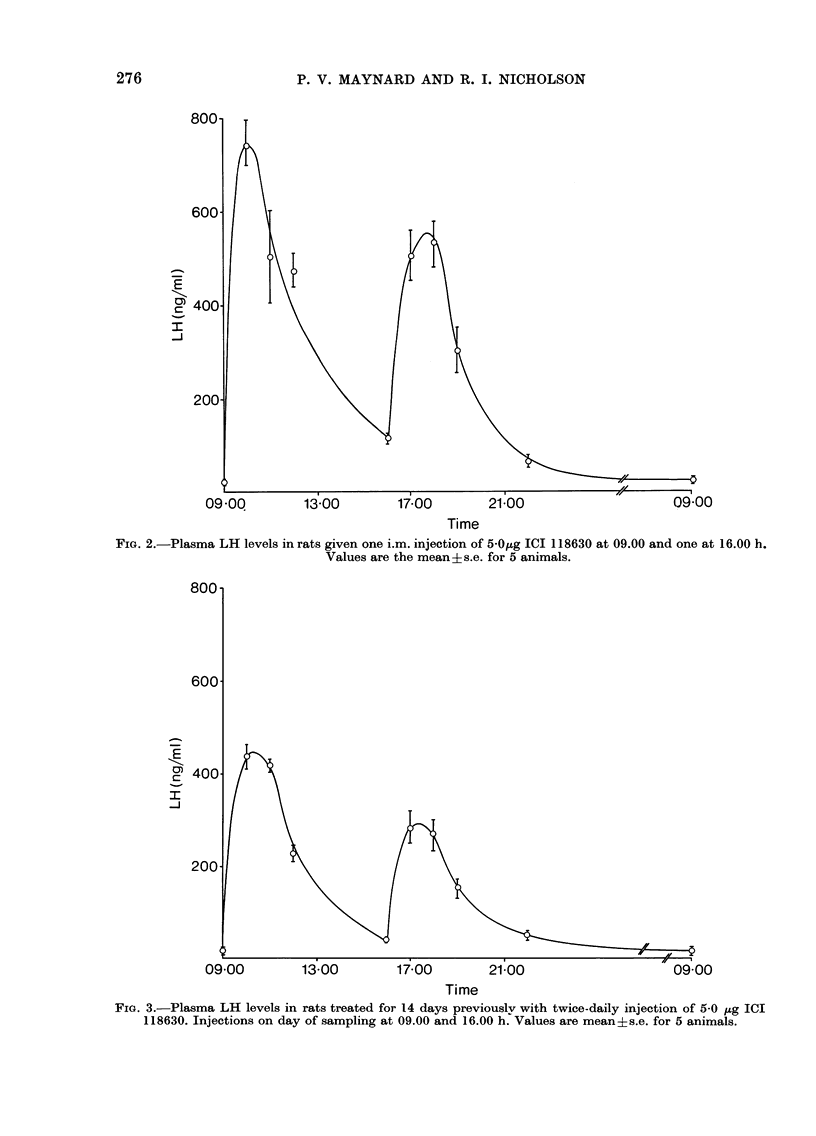
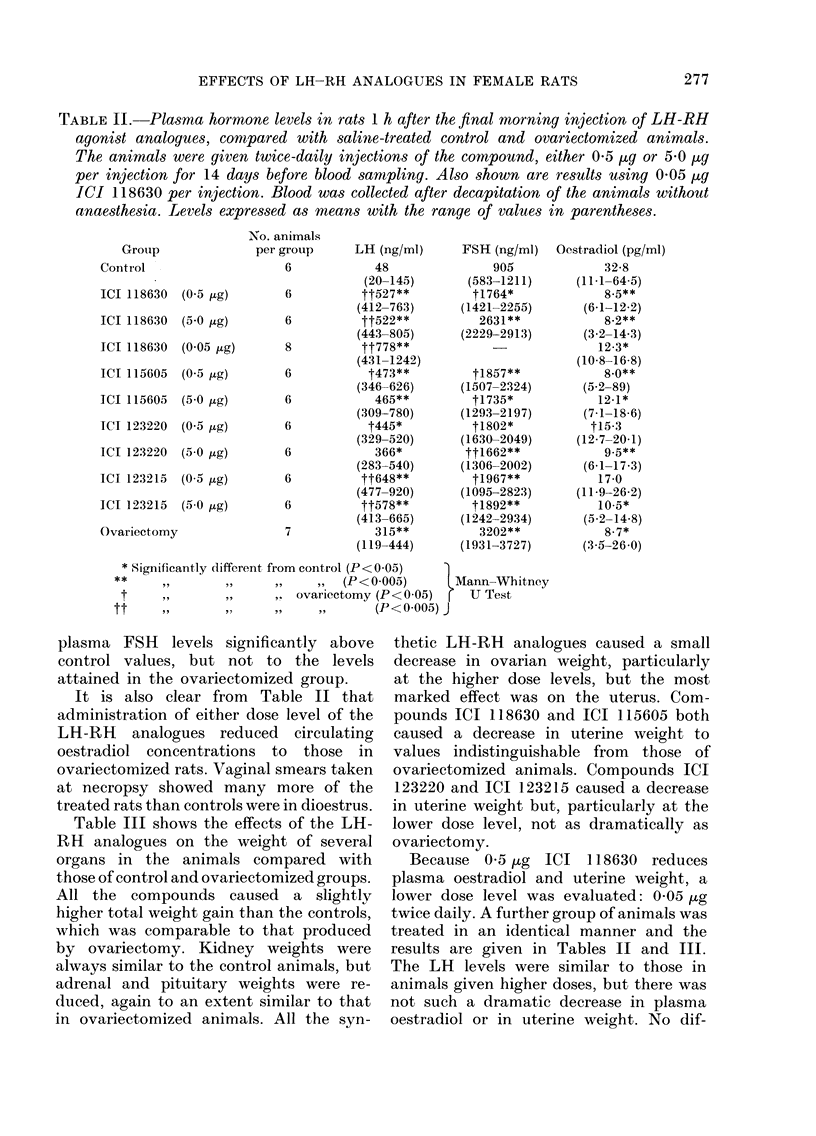
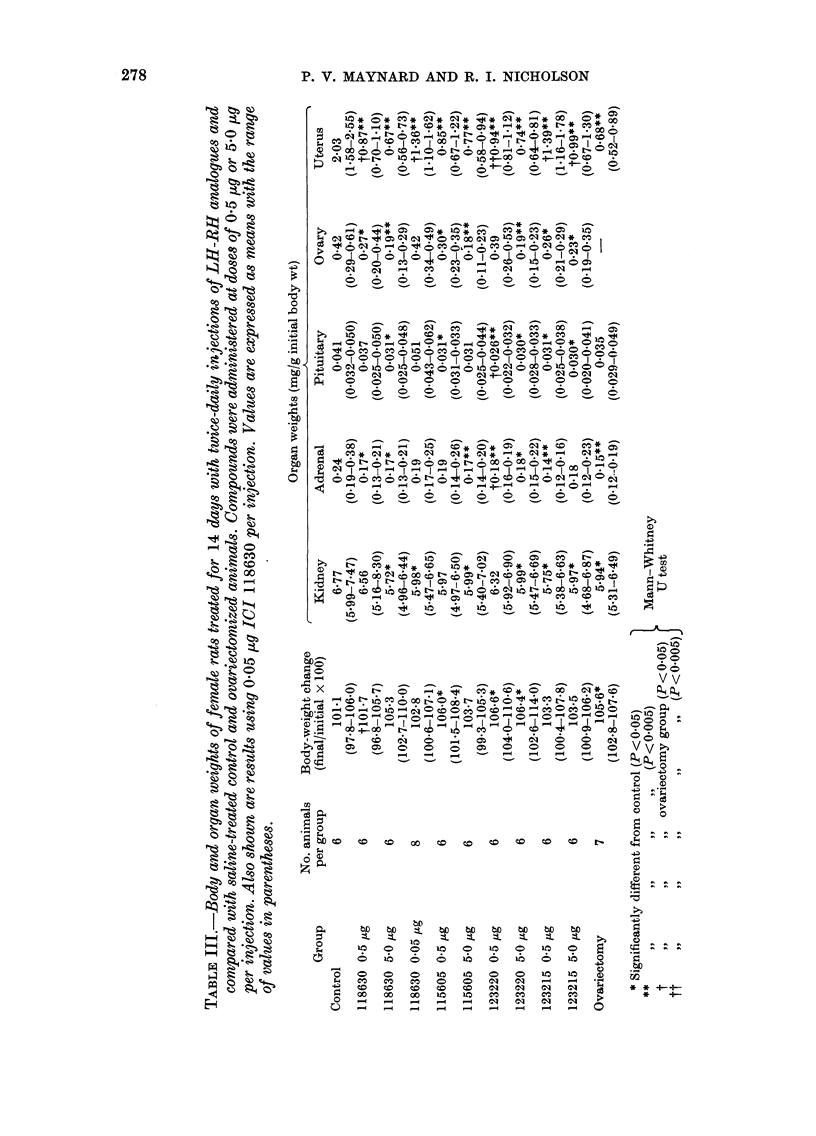
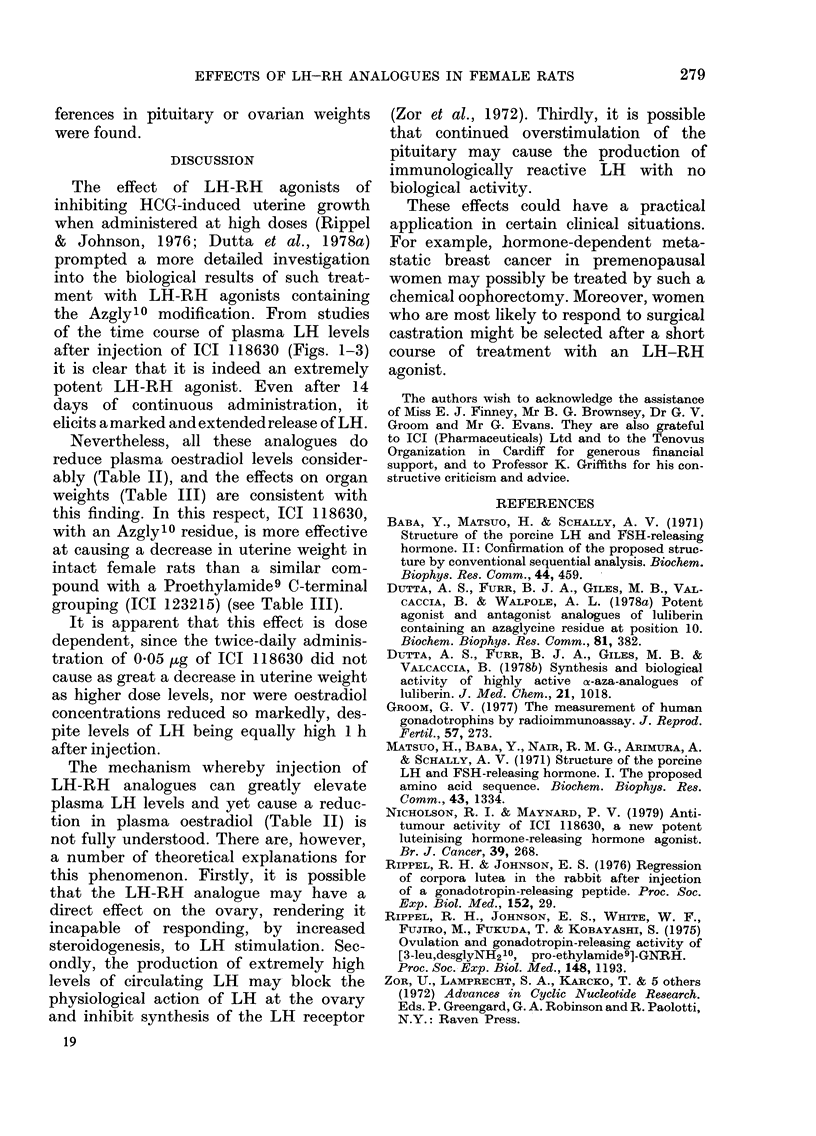
Selected References
These references are in PubMed. This may not be the complete list of references from this article.
- Baba Y., Matsuo H., Schally A. V. Structure of the porcine LH- and FSH-releasing hormone. II. Confirmation of the proposed structure by conventional sequential analyses. Biochem Biophys Res Commun. 1971 Jul 16;44(2):459–463. doi: 10.1016/0006-291x(71)90623-1. [DOI] [PubMed] [Google Scholar]
- Dutta A. S., Furr B. J., Giles M. B., Valcaccia B. Synthesis and biological activity of highly active alpha-aza analogues of luliberin. J Med Chem. 1978 Oct;21(10):1018–1024. doi: 10.1021/jm00208a004. [DOI] [PubMed] [Google Scholar]
- Dutta A. S., Furr B. J., Giles M. B., Valcaccia B., Walpole A. L. Potent agonist and antagonist analogues of luliberin containing an azaglycine residue in position 10. Biochem Biophys Res Commun. 1978 Mar 30;81(2):382–390. doi: 10.1016/0006-291x(78)91544-9. [DOI] [PubMed] [Google Scholar]
- Groom G. V. The measurement of human gonadotrophins by radioimmunoassay. J Reprod Fertil. 1977 Sep;51(1):273–286. doi: 10.1530/jrf.0.0510273. [DOI] [PubMed] [Google Scholar]
- Matsuo H., Baba Y., Nair R. M., Arimura A., Schally A. V. Structure of the porcine LH- and FSH-releasing hormone. I. The proposed amino acid sequence. Biochem Biophys Res Commun. 1971 Jun 18;43(6):1334–1339. doi: 10.1016/s0006-291x(71)80019-0. [DOI] [PubMed] [Google Scholar]
- Nicholson R. I., Maynard P. V. Anti-tumour activity of ICI 118630, a new potent luteinizing hormone-releasing hormone agonist. Br J Cancer. 1979 Mar;39(3):268–273. doi: 10.1038/bjc.1979.50. [DOI] [PMC free article] [PubMed] [Google Scholar]
- Rippel R. H., Johnson E. S., Kimura E. T. Regression of corpora lutea in the rabbit after injection of a gonadotropin-releasing peptide. Proc Soc Exp Biol Med. 1976 May;152(1):29–32. doi: 10.3181/00379727-152-39320. [DOI] [PubMed] [Google Scholar]
- Rippel R. H., Johnson E. S., White W. F., Fujino M., Fukuda T., Kobayashi S. Ovulation and gonadotropin-releasing activity of [p-LEU-6, DES-GLY NH2-10, pro-ethylamide-9] -GNRH. Proc Soc Exp Biol Med. 1975 Apr;148(4):1193–1197. [PubMed] [Google Scholar]


